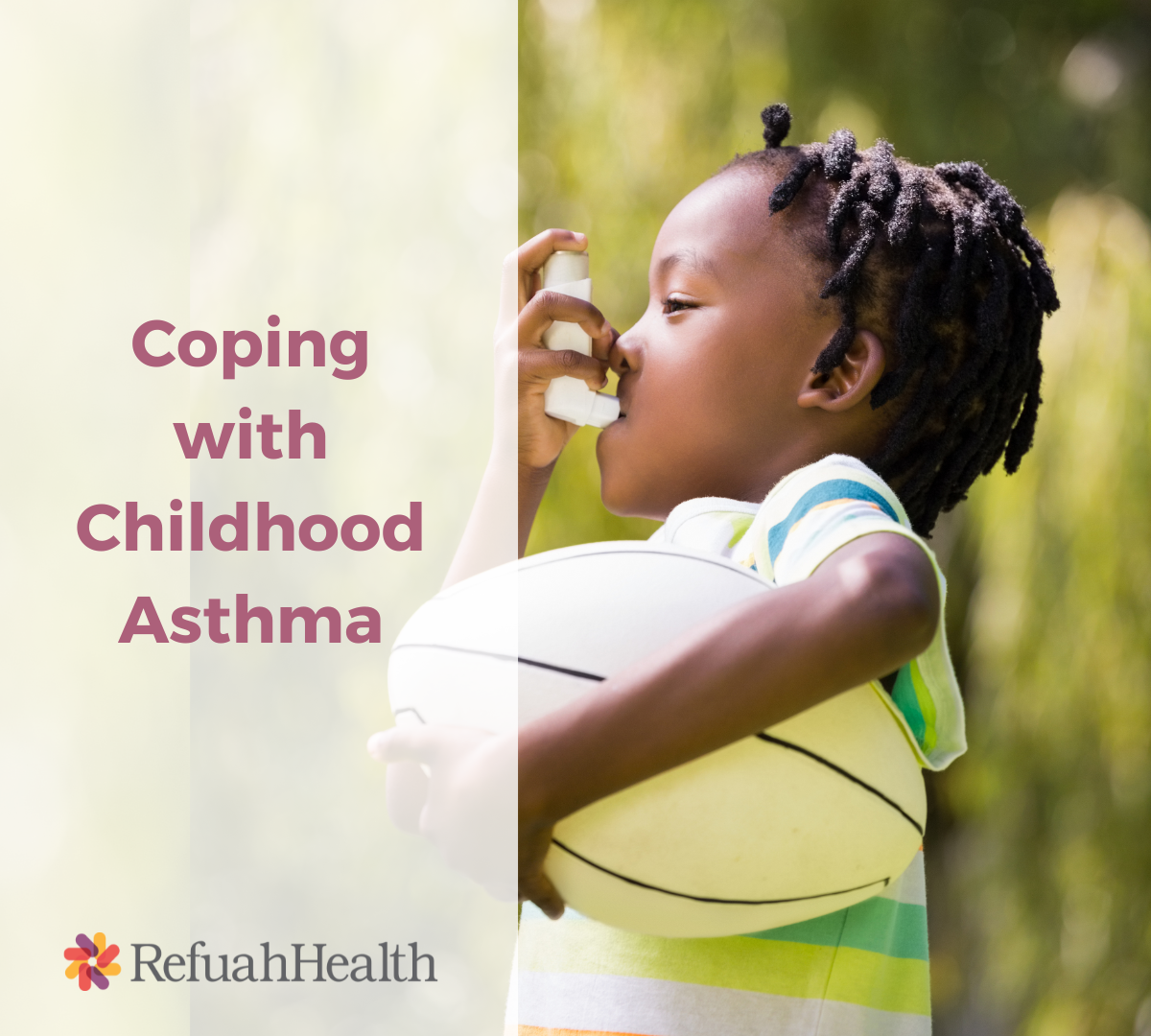
With the help of your provider, you can control your child’s asthma. They can in fact live a healthy, active life!
If your child is diagnosed with asthma, an individualized treatment plan can help them live a full and active life.
Tzvi Aaron, MD, RefuahHealth
Asthma is a common, long-term disease affecting six million children in the United States. Without treatment, a child with asthma may end up in the emergency room or hospital. This is scary for both the patient and the parent.
There’s good news! With the help of your provider, you can control your child’s asthma. They can in fact live a healthy, active life!
What is Asthma?
During an asthma attack, the tubes that carry air to the lungs become swollen, get squeezed and make extra mucus, which makes it difficult to breath. The signs of asthma can range from a cold that lingers to suddenly being unable to breath effectively. Common signs include:
- Coughing, especially at night
- A wheezing or whistling sound, especially when breathing out
- Trouble breathing or fast breathing that causes the skin around the ribs or neck to pull in tightly
- A tight chest
- Frequent colds that settle in the chest
If the symptoms reoccur, it’s time to see your provider.
Who Gets Asthma?
Asthma affects about 1 or 2 children out of 10. It can appear at any age, in an infant or adult, but is most common in school-age children.
No one really knows why one person’s airways are more sensitive than another’s, but we do know that asthma runs in families. That means if a child has asthma, he or she may also have a parent, sibling, uncle, or other relative who has asthma or had it as a child.
Asthma flare-ups may sound a little like a cold, with coughing and wheezing, but asthma is not contagious.
What causes an asthma attack?
An asthma attack is when you have trouble catching your breath. Many different asthma “triggers” can cause this to happen. Some common “triggers” are:
- Dust in your house
- Tobacco smoke
- Dirty air outside
- Cockroach droppings
- Pets
- Mold (if you’ve ever been in a damp basement and it smelled funny, it was probably mold)
- Difficult exercise that makes you breathe really fast
- Some medicines
- Bad weather
- Some types of food
- Dust mites (tiny bugs that live in dust)
- Pollen (from trees, grass, and weeds)
Strong emotions can cause an attack. When you feel overly worried, excited, angry, sad, or scared, an asthma attack can occur.
How is asthma treated?
Different types of medications help individuals with asthma. Some will benefit from the use of an inhaler, which they use to breathe in asthma medicine. Others will take pills to help them breathe better.
These types of asthma medicines should be taken daily to help avoid asthma attacks. Even if you are not having trouble breathing, you need to take your “maintenance” medication as proscribed.
In emergency situations, like during an asthma attack, when an individual needs help breathing right away, rescue medication will be administered.
A child who knows in advance that he or she will be around allergens or other triggers may need to take medication ahead of time to help keep the airways open. Children who have exercise-induced asthma can take medication before exercising so they will be able to finish a race or game.
You CAN Control Your Child’s Asthma!
Make a plan with your provider. A good asthma control plan means that your child:
- Will not have as many asthma attacks,
- Will not wheeze and cough as much, or maybe not at all,
- Will sleep better,
- Will not miss school,
- Can play sports and games outside and at school, and
- Will not have to go to the hospital!